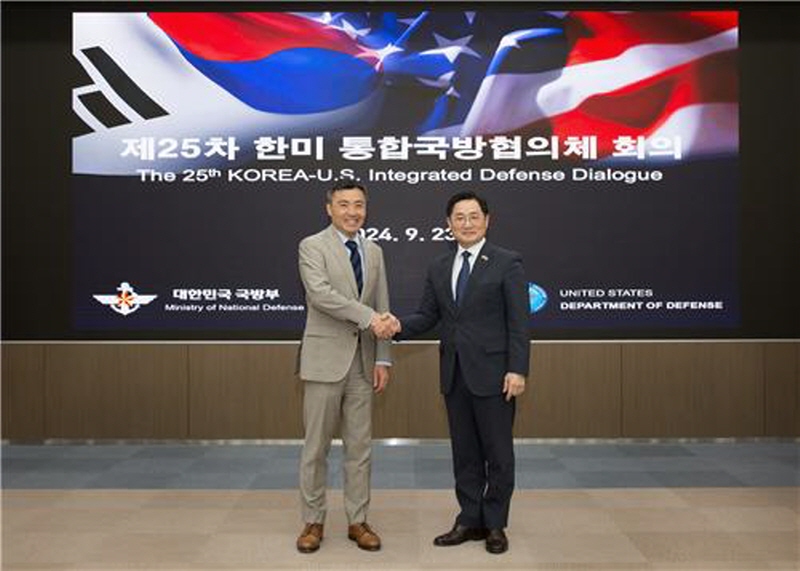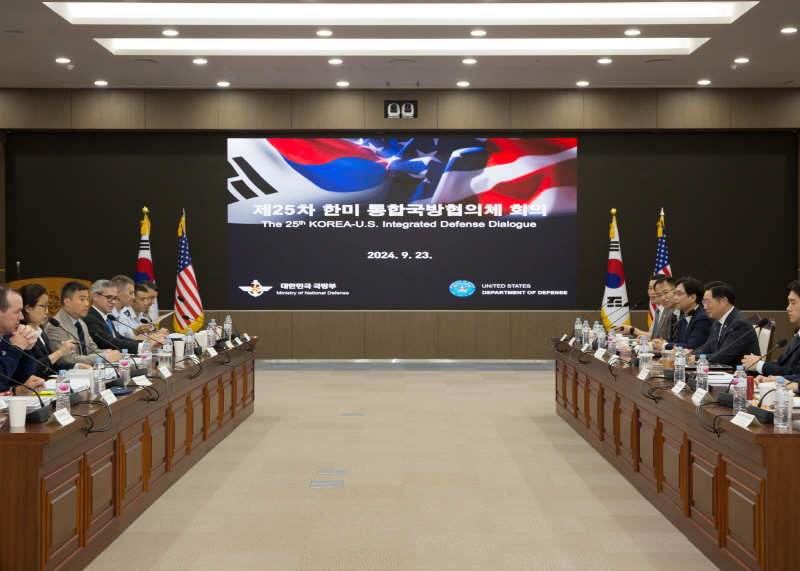North Korea is set to hold its Supreme People’s Assembly, equivalent to South Korea’s National Assembly, next month, where it appears to be preparing to enshrine Kim Jong-un’s directive for a “new border” in the constitution. In response, South Korean and U.S. defense authorities issued a joint warning for North Korea to “accept and abide by the Northern Limit Line (NLL)” in the West Sea.
According to South Korea’s Ministry of National Defense on September 24, a two-day meeting of the 25th Korea-U.S. Integrated Defense Dialogue (KIDD) was held in Seoul, with representatives from both countries expressing serious concerns over North Korea’s continued balloon-borne waste dispersal across the NLL.
The Ministry highlighted the need for close coordination between South Korea and the U.S. in countering North Korea’s escalating gray-zone provocations, including threats in the northwestern islands, the NLL region, and cyber-electromagnetic attacks.

The meeting was co-chaired by Cho Chang-lae, Deputy Ministry for National Defense Policy, and Anka Lee, Deputy Assistant Secretary of Defense for East Asia at the U.S. Department of Defense.
A key point in the joint statement underscored that the NLL has served as an effective tool in separating military forces and preventing tensions for over 70 years. South Korea urged North Korea to recognize the practical significance of the NLL and abide by it, which was supported by the U.S.
The KIDD, a regular meeting held twice a year between South Korean and U.S. defense and diplomatic officials, typically discusses the modernization of the alliance and checks progress on transitioning wartime operational control. The specific mention of the NLL at this meeting suggests both countries are seriously concerned about North Korea’s potential efforts to nullify the line and escalate tensions in the West Sea.
Next month, North Korea is expected to pass a new socialist constitution during the 11th session of its 14th Supreme People’s Assembly, which will likely formalize North Korea’s territorial claims over land, sea, and air. The joint warning from South Korea and the U.S. appears to be a pre-emptive move ahead of this constitutional change.
Last year, Kim Jong-un declared at a plenary session of the Workers’ Party that “unification with South Korea will never happen,” describing the inter-Korean relationship as one between two hostile states. In his speech at the Supreme People’s Assembly in January, Kim explicitly rejected the NLL, calling it illegal and warning that any incursion into North Korean territory, airspace, or waters—even by 0.001 millimeters—would be considered an act of war.

Military experts believe that while North Korea may struggle to unilaterally claim control over land and air borders, which are clearly demarcated by the Military Demarcation Line (MDL), it could attempt to dispute the NLL and establish its own maritime boundary in the West Sea. This would allow North Korea to justify military provocations by claiming South Korean violations of its “new maritime border.”
In February of this year, Kim Jong-un oversaw a new coastal defense missile test, where he called the NLL a “ghost line” with no legal basis under international law, and emphasized that maritime sovereignty must be defended through force. Since the beginning of this year, North Korea has kept many of its coastal artillery positions in the West Sea open, raising concerns about potential military actions.
The KIDD meeting also included a stern warning from the U.S., stating that “The United States reaffirmed its enduring and ironclad commitment to the defense of the ROK, utilizing the full range of U.S. defense capabilities – including nuclear, conventional, missile defense, and advanced non-nuclear capabilities – and reiterated that any nuclear attack by the DPRK against the United States or its Allies and partners is unacceptable and will result in the end of the Kim regime.”
Both countries condemned North Korea’s efforts to diversify its nuclear delivery capabilities, including its recent space launch attempts, and expressed grave concerns over the growing military cooperation between North Korea and Russia, as well as illicit arms trade and the transfer of advanced technologies.
The two sides also reaffirmed their shared commitment to the “complete denuclearization of North Korea” and pledged to enhance extended deterrence capabilities through the Korea-U.S. Nuclear Consultative Group (NCG).
BY YUJUNG LEE, KEUNPYUNG LEE, YOUNGNAM KIM [uuu@joongang.co.kr]




